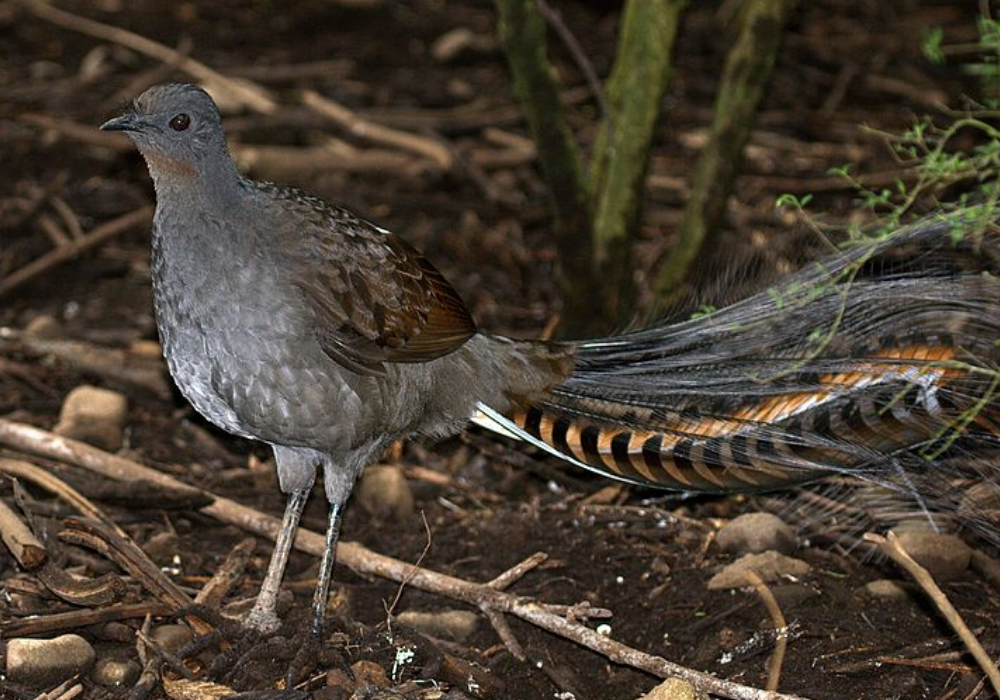We humans assume that birds are incapable of performing the same mental activities as mammals. However, Birds have diverse skills with advanced social thinking and problem-solving abilities, according to many studies. Some birds are even capable of making and using tools. Birds are significant to humans in a variety of ways, not just because of their historical significance. Birds and their eggs have been a source of sustenance for humans since the dawn of time.
Some birds excel in singing, while others excel at hunting. Birds with fascinating characteristics appeal to humans the most. A good example is parrots. The capacity of parrots to imitate is well-known. When it comes to employing vocal communication, birds share striking parallels with humans, at least in certain situations. Some birds can imitate other species, proving that vocalization can get learned. A similar bird is gaining popularity online due to similar reasons.
Online Sensation: Lyrebird aka Echo
A unique Lyrebird named “Echo” produces noise that sounds like a baby sobbing.
On August 31, Tarango Zoo uploaded a video of their bird Echo, which was rather intriguing. Tarango tweeted “Bet you weren’t expecting this wake-up call! You’re not hearing things; our resident lyrebird Echo has the AMAZING ability to replicate a variety of calls – including a baby’s cry! “
The video was seen 742.5k times, retweeted 4.5k times, and liked by more than 8.2k individuals on Twitter.
Earlier this year, Taronga Zoo was closed to visitors due to a Covid-induced lockdown. The zookeepers, on the other hand, heard a loud crying sound. The sound belonged to the zoo’s resident Lyrebird, as described by authorities. According to the zoo’s keepers, Echo is Taronga’s seven-year-old Lyrebird, who recently got videotaped replicating a baby’s ear-piercing wail.
For the past seven years, Echo has been a fantastic composer. Echo began sobbing like a natural infant a year ago. He got it from guests visiting the zoo, according to the unit supervisor for Birds of Taronga. He’s continuing honing his skills during the lockdown, and At the present, he can produce two other noises that he has recently learned. The first is the sound of a very accurate power drill, and the second is the sound of our fire alarm. It also has a “Evacuate Now” notice.

Australian Miracle Bird: Lyrebird
The most well-known bird in Australia is the Lyrebird. The Superb Lyrebird and Albert’s Lyrebird are two species of lyrebirds in the family. The name of the family comes from the Superb Lyrebird. Its magnificent tail of feathers resembles an ancient Greek musical instrument, a “lyre.”
The male Lyrebird is between 80 and 100 centimeters long, with a tail that is 55 centimeters long. The body is dark brown, with a brighter bottom part. Around the throat, the bird bears red-brown marks. His tail feathers are silvery grey on top and dark brown on the bottom. Females are smaller than males of the same species. Their hues are similar, but their tails aren’t fashioned like a lyre. Females’ tail feathers are webbed and marked with reddish patterns.
Superb male lyrebirds do not develop their lyre tails until they are three to four years old. Albert’s Lyrebird, on the other hand, is smaller and darker, with rich chestnut colors. Unlike the Superb Lyrebird, they lack the outer lyre-shaped tail. In New South Wales, Albert’s Lyrebird is an endangered species.
How Can Lyrebirds Replicate Sound?
Lyrebirds aren’t recognized for their beauty or their ability to dance. Instead, they are known for skill is in their capacity to imitate almost any sound in the world. Lyrebirds are so precise that they may occasionally mislead even the original. The Superb Lyrebird sings various mimicries, and a single male lyrebird may learn the sounds of up to 20-25 different bird species.
When attacked by predators, birds will often call out to other birds, encouraging them to make noise and fly about to fend off the assailant. Male lyrebirds can imitate the sounds of whole mobbing flocks, according to researchers. When mating or when the female rejects their approaches, they use this skill. The songbird’s vocal organ is tiny compared to other birds, despite its fantastic singing talents.
As said. in New South Wales, Albert’s Lyrebird is an endangered species. Males are more vocalized during the winter breeding season than females. It implies that singing got linked to finding the appropriate partner. However, they can mislead their mates as researchers believe the birds imitate alarm cries while mating to scare Females to remain avoiding rejection.
Running Out Of Dangers
Lyrebirds are a shy species. To stay away from danger, lyrebirds sprint and dart through the foliage. Because of their poorly muscled, tiny, thin wings, they are unable to fly. They can leap onto trees or rocks and glide back to the forest floor because of their wings.

Lyrebirds in the House
Lyrebirds may get seen in the gardens of people who live on the outskirts of the bush. It may be a wonderful experience to live with lyrebirds. You may learn about their lives and listen to their incredible imitation. These birds are also capable of raking up gardens, dispersing leaf litter, and destroying seedlings.
Install wire fences and temporary barriers made of potted plants or chicken wire around your garden beds to safeguard your plants if you are not fond of them. Lyrebirds are attracted to open compost piles, so cover yours or use a compost container.



